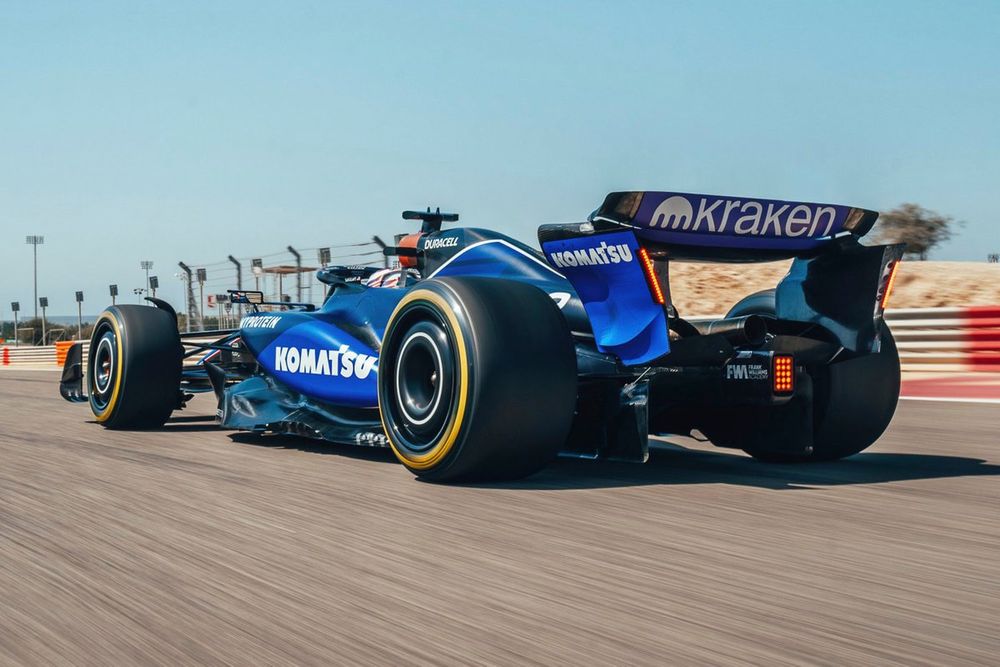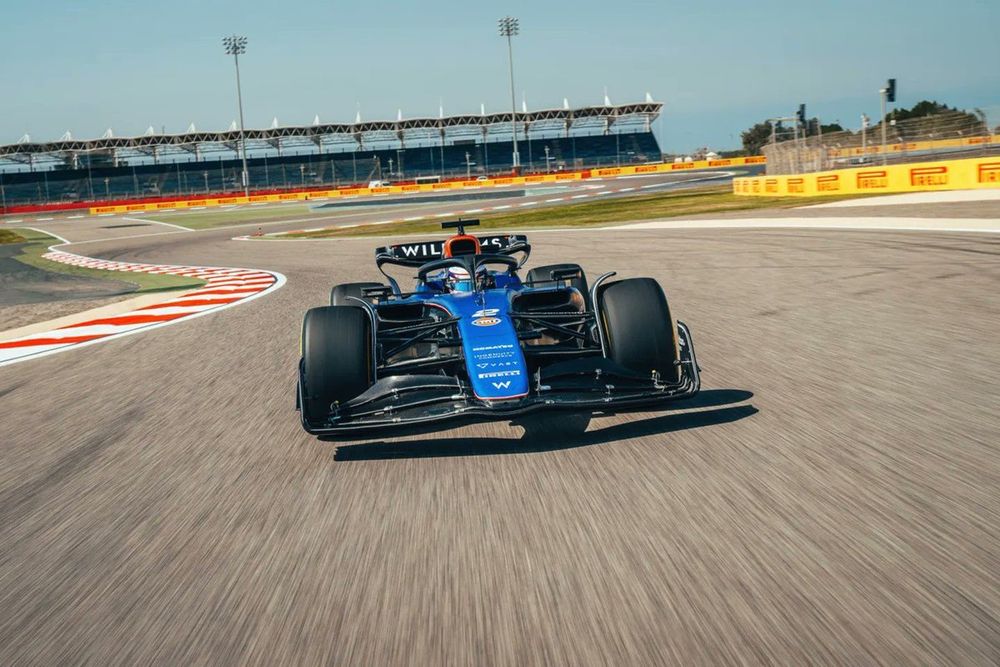The Grove-based team elected to switch off development of the 2023 car early, so it could concentrate more on making the step it needed for this season.
It could already be assured of one detail, with the car featuring a push-rod rear suspension layout, rather than the pull-rod system employed for the first two years of this regulation phase. That’s due to Mercedes making that switch this season, with Williams buying its rear end, including the gearbox and rear suspension hardware from the team, alongside its power unit supply.
Like Mercedes and Aston Martin, Williams has also retained a push-rod layout at the front of the car.
This year’s car is very much an evolution of last year when it comes to the aerodynamic components but there are several changes that warrant attention, starting at the front end with the design of the nose.
Williams FW46
Photo by: Williams
The FW46’s nose has a wider, flatter appearance overall, while the tip has a square section that’s narrower than the main body, rather than the smoother, rounder tip on its predecessor.
The front wing continues to follow the development made by the team throughout 2023, whereby the non-moveable section beside the nose has been narrowed, and the moveable flaps are wider.
In terms of the sidepods, Williams has followed the almost grid-wide trend, started by Red Bull, of utilising an underbite arrangement at front of the assembly to increase the height of the undercut. This also provides the inlet more protection from the turbulence created by the front wheel assembly.

Williams FW46
Photo by: Williams
The rest of the sidepod has been optimised around this new design feature, including a change in the shape of the bodywork along the flank, and there’s also a waterslide design in the upper surface.
The floor edge is similar to the trends seen up and down the grid during 2023, with the forward section of the edge wing rolled upwards and a series of curled strakes added to help control the airflow as it passes around the surface.
The rear wing now features the semi-detached tip section that many rivals opted for throughout the course of last season, having been first introduced by Alpine at Monaco.
Meanwhile, the upwashing swage line that Williams introduced at the Australian Grand Prix has also been retained at the base of the rear wing endplate.
Click Here to Read the Full Original Article at Autosport.com – Formula 1 – Stories…

